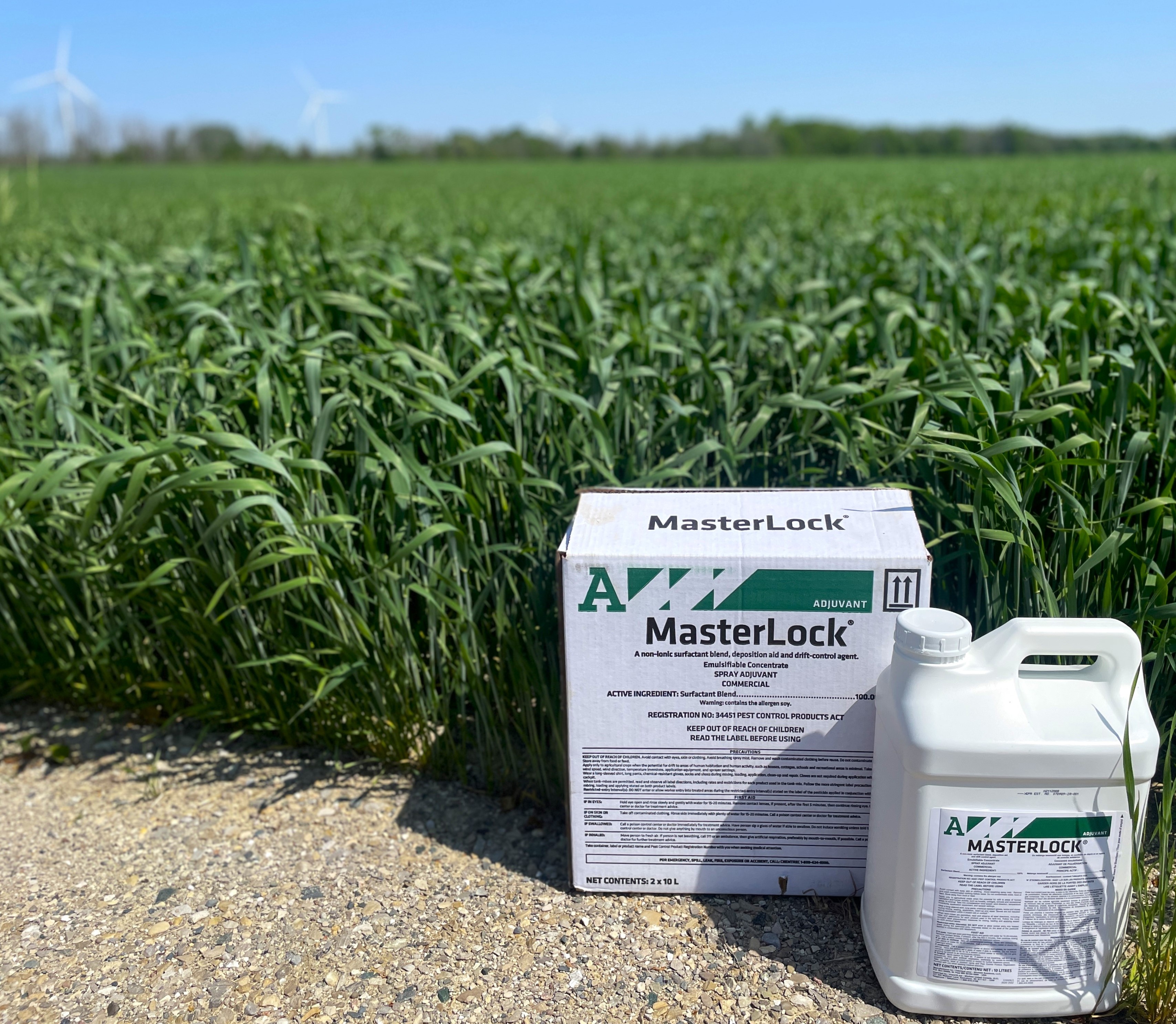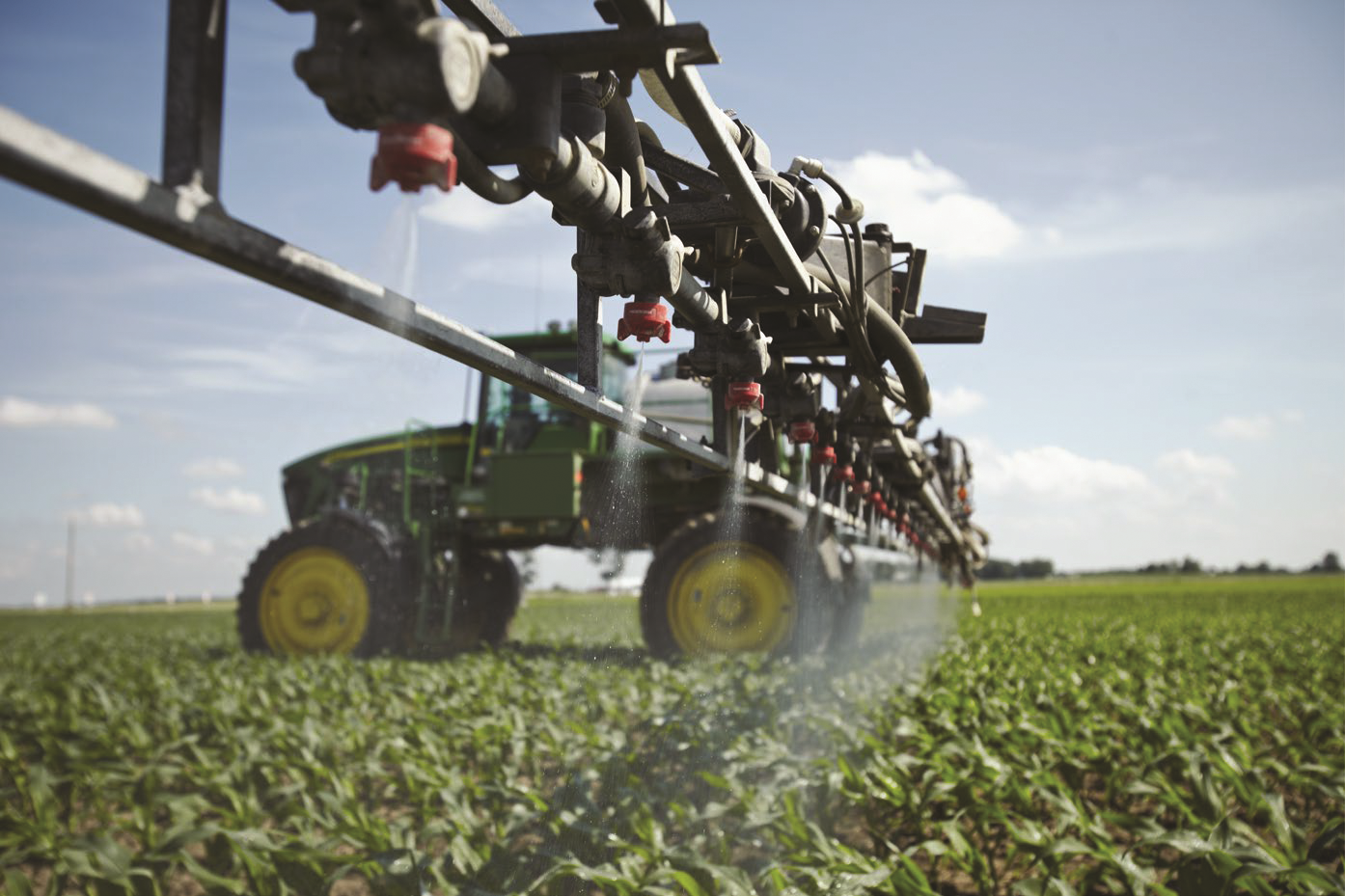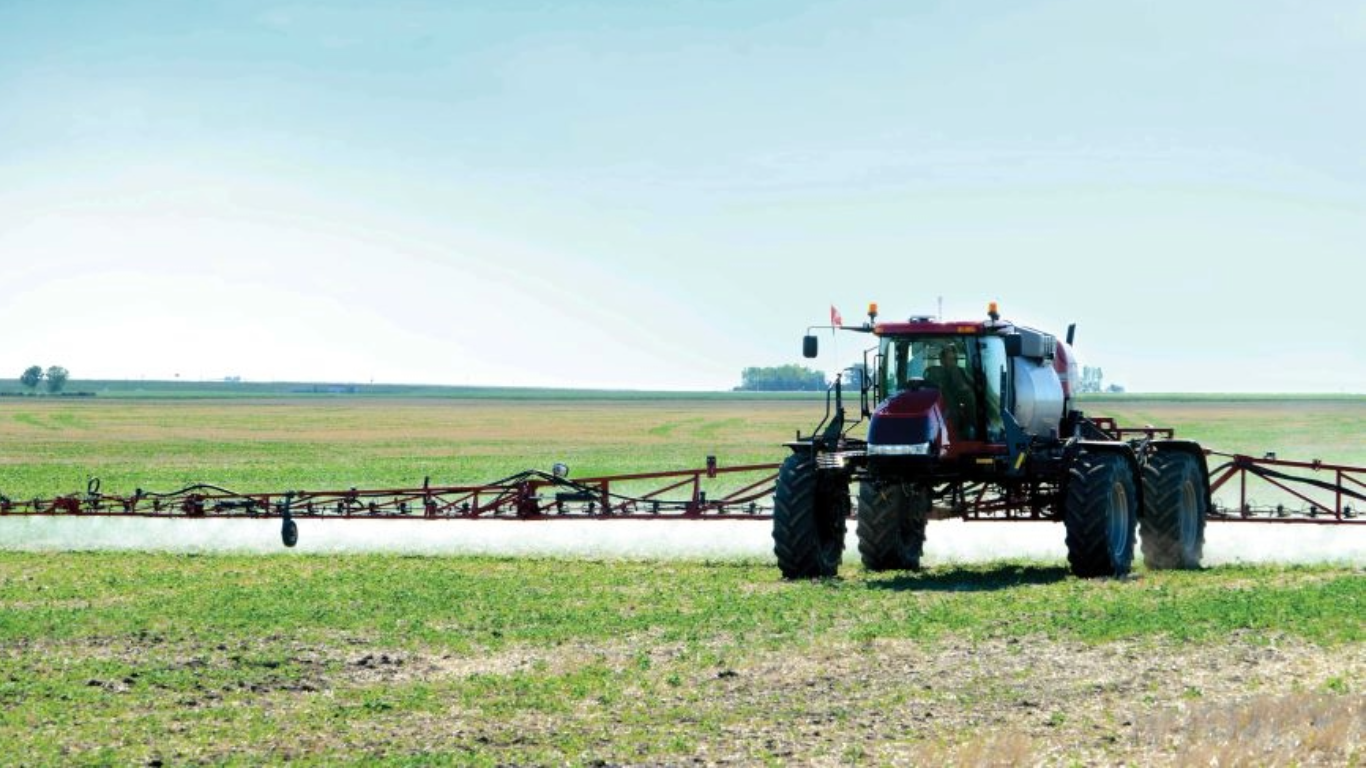WinField United has unique adjuvant technologies and they are considered the best in the world - but what is the proper way to use them?
Adjuvants are products that are added to the spray tank to improve performance or certain characteristics – think of them like dark chocolate with red wine, or chicken wings with beer – adjuvants help elevate something to make it better.
Numerous products fall under the adjuvant umbrella, but most can be grouped into surfactants and oil adjuvants. Adjuvants also include drift reduction agents (DRAs) that curb herbicide off-target movement and AMS based products that help overcome issues with spray water quality.
Adjuvants work by enabling herbicides to get into, onto, and through weeds. “The number one reason why a farmer would want to use an adjuvant would be to improve performance,” explains Todd Cardwell, Senior Agronomist at Land O’ Lakes. “If you are spending $10-20 per acre, or more, on weed control, you don’t want any weeds left behind. You are aiming for maximum control and some crop protection products are very responsive to adjuvants. For example, if you don’t have a proper adjuvant in your spray tank, you could have 60% control, but the addition of an adjuvant can bump that up to 90% control. These types of adjuvants are recommended on the product label.”
Types of Adjuvants
First, there are Activator Adjuvants. These assist in the movement of Crop Protection Products (CPPs) into plants or insects, enhancing their effectiveness. Examples include oils and non-ionic surfactants. Think of them as the trusty sidekicks that help the main hero (your CPPs) pack a serious punch. Journey® HSOC is an oil-based adjuvant and is one example of this trusty sidekick!
WinField United’s unique LockTech™ adjuvants, specifically MasterLock® and StrikeLock™ are uniquely formulated to perform as activator adjuvants with the added benefit of drift reduction technology. These adjuvants can help optimize product application by ensuring improved deposition onto plants and deeper penetration into crop canopies. These adjuvants help strike weeds and disease with improved accuracy and effectiveness.
Next are Utility Adjuvants, which may not steal the spotlight but play a crucial role in ensuring smooth operations. These aid in better mixing in tanks and can enhance spraying efficiency. Crimson® NG is one example, quietly working behind the scenes to support spray water quality. Another example is InterLock®; it works to minimize drift.

Choosing the Right Adjuvant for the Job
Local ag retailers and agronomists can help growers select the right adjuvant for the job. “Not all growers may be aware of the benefits adjuvants provide,” says Martin Carr, Agronomy Manager at WinField United Canada. “In addition to improving performance, adjuvants can reduce risk and potential drift. There is certainly an opportunity for the grower’s local agronomist to have a discussion with them around the benefits and proper usage.” Carr also emphasizes the importance of reading labels, as many Crop Protection labels recommend the use of an adjuvant.
Having the right mix in the tank will ensure every droplet sprayed is as effective as possible. “Manufacturers of adjuvants cannot anticipate every environmental condition,” says Cardwell, “There are so many variables, so how can that be put into one package that fits everyone's needs? It can’t. That’s why application practices need to be fine-tuned and dialed in by the grower or applicator. They need to pick the right adjuvant, select the right rate, and run a proper calibration to get the job done properly.”
Now the question is, with so many adjuvants in the market, how does a grower decide which product to use? “There are literally hundreds of companies that make adjuvants, and they all have different variations in quality – that's part of the complexity of choosing the right adjuvant,” explains Carr. ”WinField United has set up a sophisticated testing program to evaluate, select the top performers, and offer an array of best-in-class adjuvant products.”
Cardwell advocates for working with a trusted retail partner and using an informed decision-making process: "When making adjuvant selections, prioritize data and research. WinField United commits substantial resources annually to develop and test adjuvants, ensuring confidence in their performance."
Mixing Mistakes
A common oversight can be initiating the mixing process before the sprayer contains at least half its capacity in water. Since numerous crop protection products are concentrated, water serves as a crucial diluent. Premature addition of multiple products to the tank during mixing can lead to them vying for available water, potentially causing compatibility issues.
Dry products must be fully soluble in water before adding more products. It's essential to avoid adding a dry product followed immediately by a liquid product containing oil, as this could disrupt the suspension process. Always refer to the recommended mixing order to maintain effectiveness. As a rule of thumb, adjuvants are typically added last, unless you are using a water conditioner.
While it might seem convenient to have adjuvants pre-mixed in your spray solution, it can throw a wrench into the works when getting suspension or dry-flowable formulations to disperse properly. This can lead to problems such as clogged nozzles or uneven application, ultimately causing weed control headaches.
Off-Target Drift Reduction Potential
In addition to new nozzle configurations and application techniques, adjuvants play a pivotal role in mitigating the off-target movement by reducing the amount of driftable droplets being produced during the spray application.
Certain adjuvants contain retention aids designed to reduce the bounce and shatter of large spray droplets upon impact, which reduces droplet runoff on vertical leaf surfaces (like pesky grass weeds). While adjuvants serve to diminish the risk of spray drift, unfortunately, they can’t wave a magic wand and make drift disappear entirely, particularly in cases of poor adjuvant management regarding:
Getting the most out of adjuvants with drift reduction agents also involves using proper boom height and humidity levels. The adjuvant is one tool in the toolbox that can help, but all the other aspects of spray drift management are equally important.
When it comes to nozzle selection, the right nozzle depends on the specific chemistries being used. Glufosinate requires fine, small droplets, whereas other postemergence corn herbicides are compatible with larger droplet sizes. It's important to stock appropriate nozzles for each herbicide to ensure optimal application efficacy. Contact-type chemistries require thorough coverage, so higher carrier volumes and smaller droplets are needed. For systemic chemistries, coverage isn't as critical, allowing for lower carrier volumes and larger droplets.
Don’t Cut Rates
Reducing the application rate of an adjuvant to save costs may compromise its effectiveness against weeds. Generally, oil-based adjuvants should be applied at a v/v rate: Oil adjuvants are typically applied at 1% v/v, and HSOCs at 0.5% v/v. HSOCs are newer technology and are designed to be applied at a lower use rate than traditional oil adjuvants. Of course, the label will recommend the most appropriate rate.
Skimping on adjuvant rates can lead to product failure. Inadequate adjuvant rates may affect droplet dynamics and surface tension on leaves, which can reduce uptake and overall performance potentially requiring a rescue application. Using the right adjuvant the first time helps ensure successful application.
Before you commit to an adjuvant, take a page out of Cardwell's book and seek local data on its performance. It's like doing your homework before a big test – you'll thank yourself later! Whether you're battling weeds or looking to boost your crop's performance, choosing the right adjuvant can make all the difference. And, if you're hungry for more info on adjuvants, reach out to your local independent retail.
Adjuvants are products that are added to the spray tank to improve performance or certain characteristics – think of them like dark chocolate with red wine, or chicken wings with beer – adjuvants help elevate something to make it better.
Numerous products fall under the adjuvant umbrella, but most can be grouped into surfactants and oil adjuvants. Adjuvants also include drift reduction agents (DRAs) that curb herbicide off-target movement and AMS based products that help overcome issues with spray water quality.
Adjuvants work by enabling herbicides to get into, onto, and through weeds. “The number one reason why a farmer would want to use an adjuvant would be to improve performance,” explains Todd Cardwell, Senior Agronomist at Land O’ Lakes. “If you are spending $10-20 per acre, or more, on weed control, you don’t want any weeds left behind. You are aiming for maximum control and some crop protection products are very responsive to adjuvants. For example, if you don’t have a proper adjuvant in your spray tank, you could have 60% control, but the addition of an adjuvant can bump that up to 90% control. These types of adjuvants are recommended on the product label.”
Types of Adjuvants
First, there are Activator Adjuvants. These assist in the movement of Crop Protection Products (CPPs) into plants or insects, enhancing their effectiveness. Examples include oils and non-ionic surfactants. Think of them as the trusty sidekicks that help the main hero (your CPPs) pack a serious punch. Journey® HSOC is an oil-based adjuvant and is one example of this trusty sidekick!
WinField United’s unique LockTech™ adjuvants, specifically MasterLock® and StrikeLock™ are uniquely formulated to perform as activator adjuvants with the added benefit of drift reduction technology. These adjuvants can help optimize product application by ensuring improved deposition onto plants and deeper penetration into crop canopies. These adjuvants help strike weeds and disease with improved accuracy and effectiveness.
Next are Utility Adjuvants, which may not steal the spotlight but play a crucial role in ensuring smooth operations. These aid in better mixing in tanks and can enhance spraying efficiency. Crimson® NG is one example, quietly working behind the scenes to support spray water quality. Another example is InterLock®; it works to minimize drift.

Choosing the Right Adjuvant for the Job
Local ag retailers and agronomists can help growers select the right adjuvant for the job. “Not all growers may be aware of the benefits adjuvants provide,” says Martin Carr, Agronomy Manager at WinField United Canada. “In addition to improving performance, adjuvants can reduce risk and potential drift. There is certainly an opportunity for the grower’s local agronomist to have a discussion with them around the benefits and proper usage.” Carr also emphasizes the importance of reading labels, as many Crop Protection labels recommend the use of an adjuvant.
Having the right mix in the tank will ensure every droplet sprayed is as effective as possible. “Manufacturers of adjuvants cannot anticipate every environmental condition,” says Cardwell, “There are so many variables, so how can that be put into one package that fits everyone's needs? It can’t. That’s why application practices need to be fine-tuned and dialed in by the grower or applicator. They need to pick the right adjuvant, select the right rate, and run a proper calibration to get the job done properly.”
Now the question is, with so many adjuvants in the market, how does a grower decide which product to use? “There are literally hundreds of companies that make adjuvants, and they all have different variations in quality – that's part of the complexity of choosing the right adjuvant,” explains Carr. ”WinField United has set up a sophisticated testing program to evaluate, select the top performers, and offer an array of best-in-class adjuvant products.”
Cardwell advocates for working with a trusted retail partner and using an informed decision-making process: "When making adjuvant selections, prioritize data and research. WinField United commits substantial resources annually to develop and test adjuvants, ensuring confidence in their performance."
Mixing Mistakes
A common oversight can be initiating the mixing process before the sprayer contains at least half its capacity in water. Since numerous crop protection products are concentrated, water serves as a crucial diluent. Premature addition of multiple products to the tank during mixing can lead to them vying for available water, potentially causing compatibility issues.
Dry products must be fully soluble in water before adding more products. It's essential to avoid adding a dry product followed immediately by a liquid product containing oil, as this could disrupt the suspension process. Always refer to the recommended mixing order to maintain effectiveness. As a rule of thumb, adjuvants are typically added last, unless you are using a water conditioner.
While it might seem convenient to have adjuvants pre-mixed in your spray solution, it can throw a wrench into the works when getting suspension or dry-flowable formulations to disperse properly. This can lead to problems such as clogged nozzles or uneven application, ultimately causing weed control headaches.
Off-Target Drift Reduction Potential
In addition to new nozzle configurations and application techniques, adjuvants play a pivotal role in mitigating the off-target movement by reducing the amount of driftable droplets being produced during the spray application.
Certain adjuvants contain retention aids designed to reduce the bounce and shatter of large spray droplets upon impact, which reduces droplet runoff on vertical leaf surfaces (like pesky grass weeds). While adjuvants serve to diminish the risk of spray drift, unfortunately, they can’t wave a magic wand and make drift disappear entirely, particularly in cases of poor adjuvant management regarding:
- Nozzle design
- Tip size
- Spray pressure
- Proximity to sensitive plants
- Wind direction
- Excessive wind speeds
Getting the most out of adjuvants with drift reduction agents also involves using proper boom height and humidity levels. The adjuvant is one tool in the toolbox that can help, but all the other aspects of spray drift management are equally important.
When it comes to nozzle selection, the right nozzle depends on the specific chemistries being used. Glufosinate requires fine, small droplets, whereas other postemergence corn herbicides are compatible with larger droplet sizes. It's important to stock appropriate nozzles for each herbicide to ensure optimal application efficacy. Contact-type chemistries require thorough coverage, so higher carrier volumes and smaller droplets are needed. For systemic chemistries, coverage isn't as critical, allowing for lower carrier volumes and larger droplets.

Don’t Cut Rates
Reducing the application rate of an adjuvant to save costs may compromise its effectiveness against weeds. Generally, oil-based adjuvants should be applied at a v/v rate: Oil adjuvants are typically applied at 1% v/v, and HSOCs at 0.5% v/v. HSOCs are newer technology and are designed to be applied at a lower use rate than traditional oil adjuvants. Of course, the label will recommend the most appropriate rate.
Skimping on adjuvant rates can lead to product failure. Inadequate adjuvant rates may affect droplet dynamics and surface tension on leaves, which can reduce uptake and overall performance potentially requiring a rescue application. Using the right adjuvant the first time helps ensure successful application.
Before you commit to an adjuvant, take a page out of Cardwell's book and seek local data on its performance. It's like doing your homework before a big test – you'll thank yourself later! Whether you're battling weeds or looking to boost your crop's performance, choosing the right adjuvant can make all the difference. And, if you're hungry for more info on adjuvants, reach out to your local independent retail.


